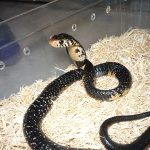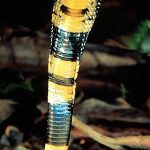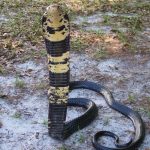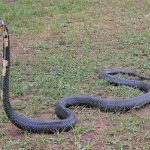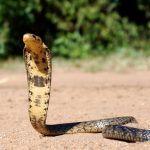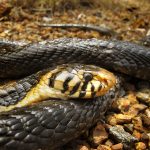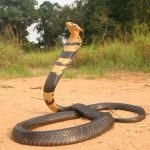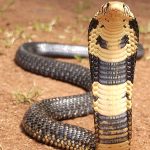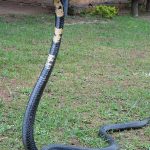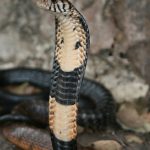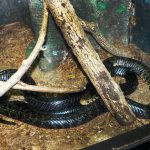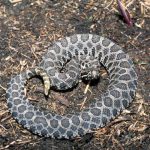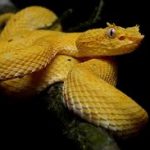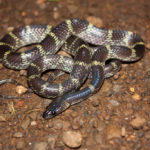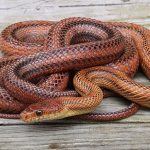Forest Cobra
The forest cobra is a large, extremely venomous species of snake found in Africa. The species is world’s largest true cobra species. The snake is terrestrial but, is a good climber as well. It is fast-moving and swift and is an adept swimmer.
| Kingdom | Animalia |
| Phylum | Chordata |
| Class | Reptilia |
| Order | Squamata |
| Suborder | Serpentes |
| Family | Elapidae |
| Genus | Naja |
| Scientific Name | Naja melanoleuca |
| Other Names | Black Cobra, Black and White-lipped Cobra |
| Length | Around 1.4 to 2.2 m, but may reach 2.7 to 3.1 m |
| Color | Consists of three color variations:
Some are shiny black with cream or white chin, throat and anterior part of the belly with large black patches and cross-bars, black and white markings on the sides of the head; some specimens contain black and yellow bands with black tail, top of the head is brownish-yellow with yellow lips, chin and throat; some other members have brownish or blackish-brown upper part with pale lower parts, yellow or cream belly with profuse brown or black patches; full black (melanistic) specimens have also been recorded |
| Distribution | Senegal, Guinea-Bissau, southeastern Mali, Guinea, Liberia, Sierra Leone (western Africa); Republic of Congo, the Democratic Republic of Congo, Central African Republic(central Africa); western Kenya, Rwanda, Burundi, Uganda, (eastern Africa); few parts in southern Africa |
| Habitat | Savanna and grassland, tropical and subtropical rainforests, mangroves |
| Diet | Amphibians, fish, other snakes, lizards, bird eggs, rodents, small mammals |
| Predators | Other snakes |
| Venom Fact | Neurotoxic |
| Mode of Reproduction | Oviparous (egg laying) |
| Clutch Size | 11 to 26 |
| Incubation Period | 55 to 70 days |
| Average Lifespan | Around 20 years; one specimen lived for 28 years in captivity |
Forest Cobra Pictures Gallery
- Baby Forest Cobra
- Black and White-Lipped Cobra
- Black Forest Cobra
- Forest Cobra Bite
- Forest Cobra Images
- Forest Cobra Photos
- Forest Cobra Pictures
- Forest Cobra Snake
- Forest Cobra
- Naja Melanoleuca
- Forest Cobra Tail Spike
- Forest Cobra Length


